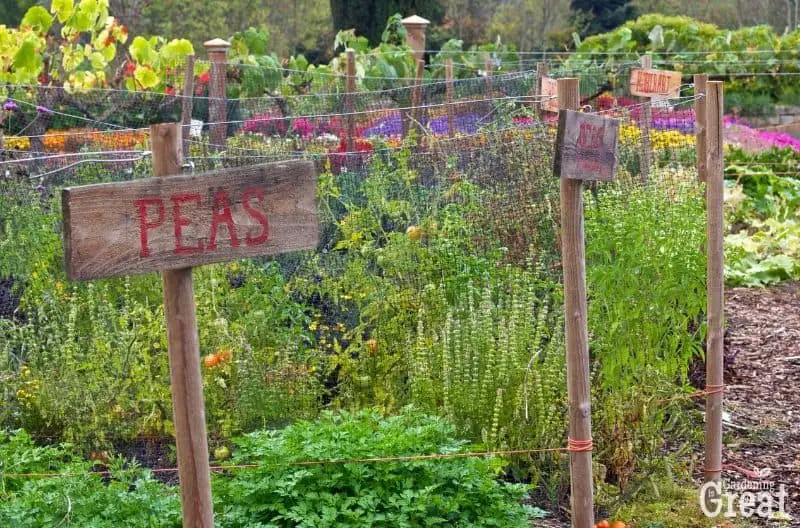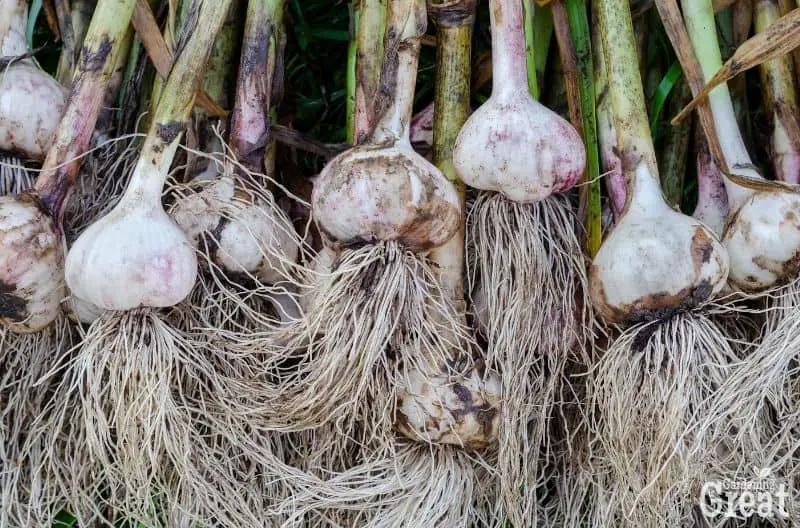8 Vegetables To Plant In Autumn
With summer drawing to a close, you might think that’s it for this year’s growing season. But don’t let the change in weather fool you! Did you know you can still grow vegetables successfully during autumn?
Certain vegetables are slow-growing and will remain dormant during autumn and begin growing again in spring. Whereas other vegetables are quick-growing, and perfect for last-minute planting before winter strikes.

In this post, I am going to share 8 vegetables to plant in autumn that will grow successfully, along with some top tips to help your plants grow during the cooler months.
[toc]
Top Tips for Planting Vegetables in Fall
To make the most of your plants and ensure they grow successfully during the cooler autumn months, here are a few things to consider:
Soil Quality
After your summer vegetables have been fully harvested, it is time to work on the soil. Add some high-quality compost, dig and turn your soil.
This helps to ensure the soil is full of nutrients to support your new fall vegetables to thrive.
By turning your soil, you are also helping to improve the drainage which is vital for your plants to grow healthy and strong.
Time to Sow
Remember that if you want to grow vegetables during autumn, there is actually a narrow window of opportunity to sow your seeds.
Autumn weather can go from mild to extremely cold within a short amount of time.
It is recommended to enable your autumn vegetables as long a season as possible to start sowing your seeds in the middle of summer.
This takes some careful planning to allow yourself time to harvest your summer vegetables, prepare the soil, and then sow the new seeds.
Vegetable Selection
If you know you would like to plant vegetables for autumn, it is important to consider if you want these vegetables to be ready to harvest before winter. Or, if the vegetables will be dormant during winter to then harvest in the following spring.
This is an important factor to consider so that you select the right vegetables to suit your needs (read on below for a list of slow-growing and quick-growing vegetables to plant in autumn).
Longer Lasting
As the weather is cooler in autumn than during the summer, it provides your growing vegetables in a similar condition to your fridge.
The cooler temperature helps your fully-grown vegetables last much longer, enabling you to harvest them at a slower rate as and when you need them, rather than all at once. This provides you with a longer-lasting supply of each vegetable than during the summer months.
8 Vegetables to Plant in Autumn
Once you have prepared your soil after harvesting your summer vegetables, it is time to choose which vegetables you would like to grow during fall.
You can either consider slow-growing vegetables or quick-growing vegetables.
Slow-growing vegetables are a great option for you to be prepared for spring. Many of these vegetables take a long time to grow and are best planted during autumn, but lie dormant over winter and finish growing ready to be harvested in late spring.
Whereas quick-growing vegetables, usually your leafy salad greens, only take a few weeks until they are ready to harvest. These are a great choice if you would like to maximize your homegrown vegetables for as long as possible and want to enjoy seasonal meals.
Slow-growing Vegetables
Onions
Onions are a really popular choice with gardeners as a slow-growing vegetable to plant in autumn.
Once planted, they require little to no care over autumn and winter, and usually begin growing the following spring.
When planting onions, ensure to plant with the larger end of the bulb facing downwards. This is the root end and will enable roots to establish themselves, an important first task for onions to complete before winter sets in.
Onions need a large enough hole to cover their bulb and to be spaced apart to enable each onion enough space for their roots to grow.
After planting, cover with loose soil and water to help their roots establish.
Over the winter, they may require a small amount of weeding and water on dry days. Otherwise, just ensure that the soil does not become waterlogged around the onions, and remember not to plant over the top of them in spring.
Garlic
Similar to onions, garlic requires a long time to grow but with minimal maintenance.
If choosing to sow garlic seeds in autumn, be sure to check they are a hard neck variety. Hardneck garlic can manage the cold winter frosts compared with soft neck varieties.

When planting garlic, ensure to break your bulb and plant each clove with the larger end facing downwards.
A top tip when growing garlic is to cover it during the winter with netting as unfortunately, birds have a keen nose for finding and digging up garlic cloves. The netting will provide them with extra protection whilst they hibernate during the winter ready for growth in spring.
Broad Beans
If choosing to grow broad beans over winter, choose a long pod variety as they are the likeliest to survive the colder months.
Once sown in the ground, broad beans do not take much maintenance. They can require support once the shoots grow taller and this helps keep the beans off of the soil.
During the winter months, if it becomes too cold, it is recommended to place horticultural fleece over the top of your vegetables to protect them.
Peas
Round pea varieties are better suited to sowing in autumn and surviving a cold winter.
Peas will begin to germinate within the autumn, but then growing holts during winter. But do not worry! They are simply hibernating and will begin growing again once the weather warms in spring.
As peas grow upwards with long shoots, they do require sturdy support to climb around. Once you see shoots begin to appear in the ground, place supports such as pea sticks, next to them. Your pea plants will naturally begin to grow around them and ensure the growing peas remain off the ground.
Quick-growing Vegetables
Turnip
Turnips can be grown during the summer or autumn. For planting in the autumn, ensure to begin sowing in late summer so they are ready to harvest before winter.
They require full sun and to be well watered. Otherwise, the only other maintenance is regular weeding to limit competition for nutrients, space, and sunlight.
Spinach
Spinach is an excellent vegetable to plant in autumn due to its speedy growth. It can take just six weeks for spinach to grow from being sown to ready to harvest.

When growing spinach, ensure the soil is rich and thin out your plants. Having your spinach plants too close together during the autumn can lead to wet leaves leading to diseases.
By thinning out your spinach plants you are helping them to grow healthily as well as prolonging the supply of spinach before winter.
Radish
Radishes are popular with gardeners as they require minimal maintenance and are incredibly fast to grow.
Taking just four weeks to grow from being sown, radishes are an ideal autumn vegetable.
Radishes do well during autumn compared with the summer as they don’t grow well in hot weather. Hence the cooler months enable them to grow successfully in partial shade or full sunlight.
Bar ensuring radishes gain enough water, they require no further attention until they are ready to be harvested.
Rocket
Rocket is a plant that can be grown and harvested from late February until around October/November.
Rocket is sown from seeds that don’t require a deep amount of soil. For a continuous supply of rocket during autumn, ensure to sow more seeds every two weeks.
The young leaves are best and it is recommended to pick these to encourage further growth throughout the season.
If the weather does start to become too cold during autumn, you can cover the rocket with horticultural fleece.
These 8 vegetables are ideal for planting in autumn. Ensure you know which vegetables are quick or slow-growing so you can prepare for when they need harvesting or if they need additional protection during the winter months.
By planting these vegetables during fall provides you with a longer growing season of fresh vegetables to enjoy at home.
For more growing guides, take a look at these posts to help your vegetables succeed:
